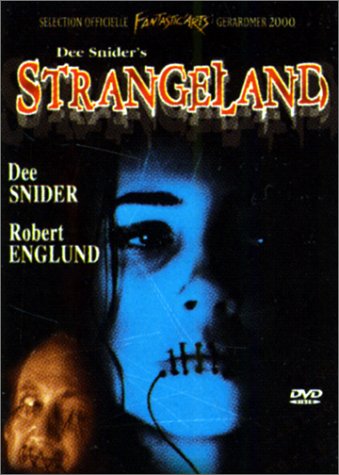
Strangeland is a 1998 thriller/horror film written by and starring Dee Snider (of 80s glam metal band Twisted Sister) and directed by John Pieplow. Amazon
One night in 1998, two teenage girls, Genny Gage and her friend Tiana Moore, log onto a chatroom and talk with a guy known as “Captain Howdy”. (Apparently no one in this movie gets the reference to The Exorcist.) They decide to go to a party he says he is having. Both girls disappear, along with other missing teenagers in the suburban town of Helverton.
Genny’s father, Detective Mike Gage, searches for his daughter and the other missing teens. Tiana’s body (dead from a congenital heart condition) turns up in an abandoned car, along with a large gauge septum piercing bar. That and the marks on Tiana’s body lead Gage to a local fetish/metal club, Xibalba, though they don’t realize that Captain Howdy is in the same building, trying to have a near death experience.
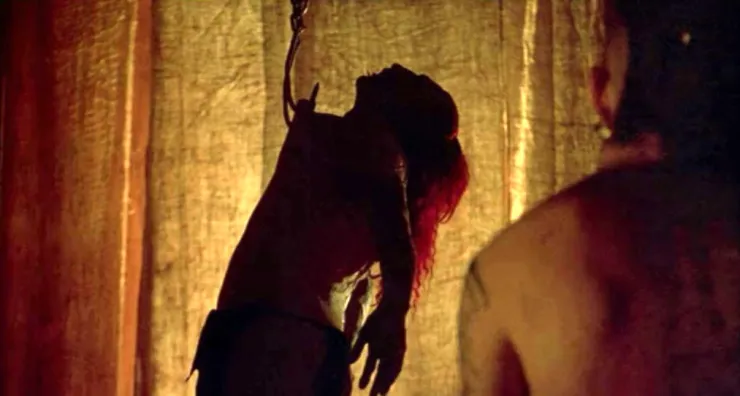
Gage is almost comically inept with computer communications, and has to consult with his teenage niece to find the chat room and the connection to Captain Howdy. Gage follows an address from Howdy, but ends up ambushing an elderly couple in their bed. Howdy taunts him with an audio recording of his voice, but Gage notices the sound of a dog barking in the background, and uses that to find Captain Howdy’s house nearby.
Gage enters the house (Warrants? Probable cause?) and finds several teenagers, including Genny, with their mouths sewn shut and in bondage/modern primitive devices. He fights and captures Captain Howdy.
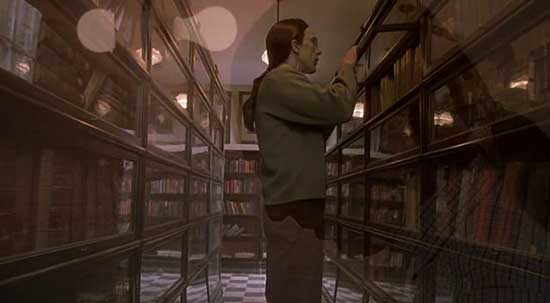
After a year in jail and three years in a mental institution, “Captain Howdy” is released from custody as Carleton Hendricks, with the piercings removed, the tattoos covered with makeup, and wearing a drab grey cardigan. He’s on medication and wants to lead a quiet life in his house.
The people of the town are not pleased about this, and a mob gathers outside his home. One of them, Jackson Roth (Robert Englund), thinks his own teenage daughter has gone missing at the hands of Hendricks. (She’s actually having an affair with an adult man.) Roth and his friends decide to do something about this.
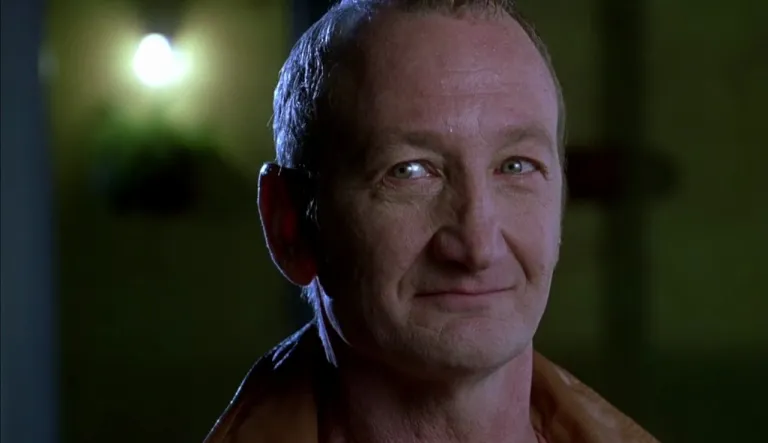
(Interesting bit of meta-casting, as Robert Englund played the original Freddy Krueger in the Nightmare on Elm Street slasher franchise, in which the character preyed on children, was killed by vigilantes, and rose from the dead with supernatural powers.)
Roth’s gang break into Hendricks’ home and drag him out. Detective Gage sees this but does not interfere. The gang hangs Hendricks in a public park, then leaves him. Hendricks, however, survives this and frees himself. “What a rush,” he comments.
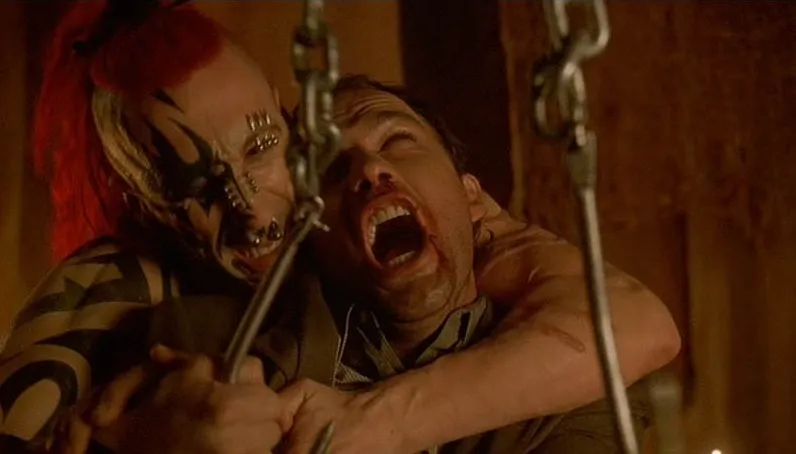
Unmedicated and bent on revenge, Howdy somehow kidnaps Roth and other people and puts them in more devices, including a Coma-style hook suspension and a kavadi cage. He lures Gage into a final confrontation, and Gage finally triumphs. He suspends Howdy from hook chains and sets him on fire. Finally, Gage promises to his partner he will turn himself in for killing Hendricks, acknowledging that all of this happened because he didn’t play by the rules.
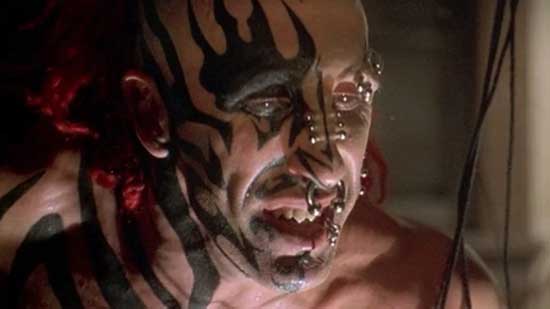
Strangeland is a definitely a work of its time, as one of the first sounds is an acoustic modem, but it’s strangely prescient too. It’s before broadband internet and smart phones, before Columbine, before 9/11, before a transwoman was on the cover of Vanity Fair, before 4chan and Qanon, before Proud Boys. It even presages the aesthetic of 8mm, Fight Club, The Cell and the Saw and Hostel “torture porn” franchises. Captain Howdy, a body-building, basement-dwelling modern primitive who rants about initiations and modern alienation, would fit right in with certain elements of the right wing blogosphere like Costin Vlad Alamariu (aka “Bronze Age Pervert“), Jack Donovan, Marcus Follin (aka “The Golden One“), and the like.
The roots of this story was the track “Horror-Teria (The Beginning): A) Captain Howdy B) Street Justice” on Twisted Sister’s 1984 album Stay Hungry, about a sadistic child killer who walks free on a technicality and is murdered by angry parents. (Curiously, this album was released before A Nightmare on Elm Street was released in theatres.)
I suspect that the other major influence of this project came from the shock value of the images of the body modification/modern primitive subculture hitting the mainstream in the 1990s. (Operation Spanner hit the news in 1987, and Re/Search’s groundbreaking Modern Primitives book was published in 1989.) Somebody thought, these images are so striking that we have to make a movie about them. However, they failed to grasp the deeper ethos behind these images, and instead they were slotted into a fairly standard serial killer plot, and Captain Howdy became an attempt to create another boogeyman killer, a composite of late 90s bourgeois parental anxieties about the Internet and deviant sexuality.
This is Dee Snider’s only screenwriting credit, and I’m honestly disappointed that this film didn’t dig deeper into its ideas. Gen Xers will remember Snider as the front man for heavy metal band Twisted Sister, and how in 1985, he stood up to Tipper Gore and the rest of the Parents Music Resource Centre in Congress, testifying against music censorship and warning labels. When the Twisted Sister track “Under the Blade” was accused of referring to sadomasochism, violence and rape, Snider said:
“…the only sadomasochism, bondage, and rape in this song is in the mind of Ms. Gore. […] Ms. Gore was looking for sadomasochism and bondage, and she found it. Someone looking for surgical references would have found it as well. […] The full responsibility for defending my children falls on the shoulders of my wife and I, because there is no one else capable of making these judgments for us.”
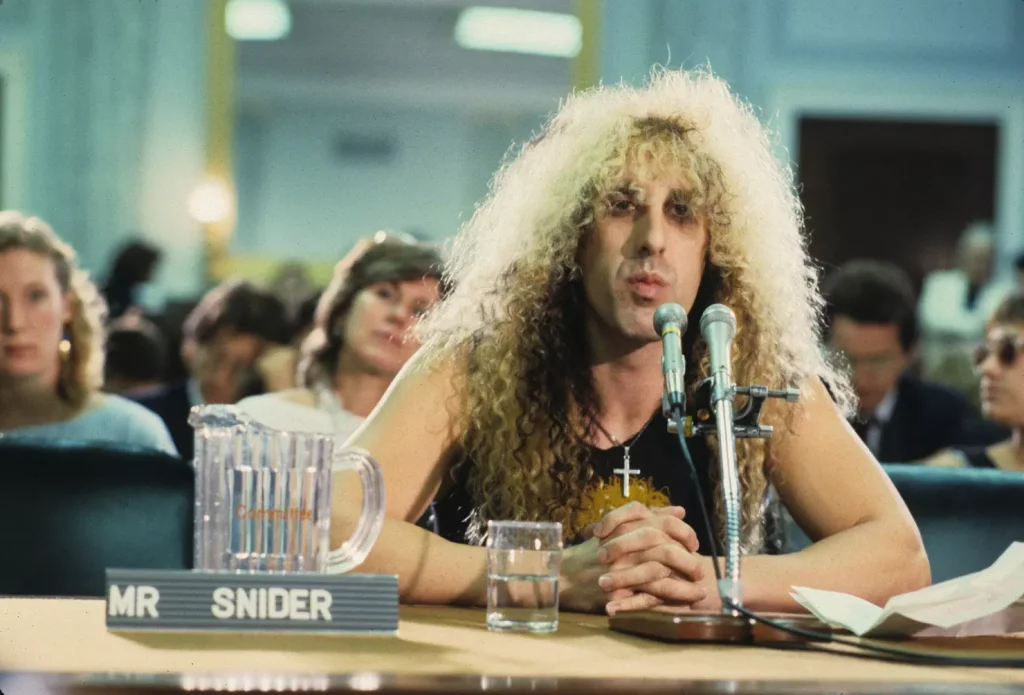
While I usually resist the impulse to try to rewrite the films I study, I want to revise Strangeland as it was on the brink of becoming something much more interesting than it turned out to be. The most obvious problem is that the film has Captain Howdy enticing his victims with false pretenses and kidnapping them. What if Howdy’s “victims” volunteered for this experience? Wouldn’t depicting him as less of a serial killer and more of a cult leader make a more interesting story? The violence done to Howdy, both in his psychiatric treatment and his lynching, would be even more morally ambiguous. What if there’s a moral panic in the town that leads to violence between the “normal” people and the patrons of Xibalba? That would leave Gage, as an ostensibly “normal” man, questioning his place in the world and the legitimacy of the order he upholds.
Instead, we get what feels like a feature-length version of a criminal investigation procedural, which provides some transgressive and voyeuristic thrills in somebody’s idea of the alternative community, before wrapping everything up in restored order.

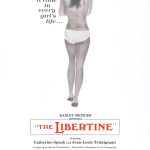
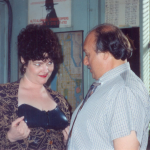

[…] History of BDSM, Strangeland (1998): The Celluloid Dungeon […]
[…] History of BDSM, Strangeland (1998): The Celluloid Dungeon […]
[…] History of BDSM, Strangeland (1998): The Celluloid Dungeon […]
[…] History of BDSM, Strangeland (1998): The Celluloid Dungeon […]